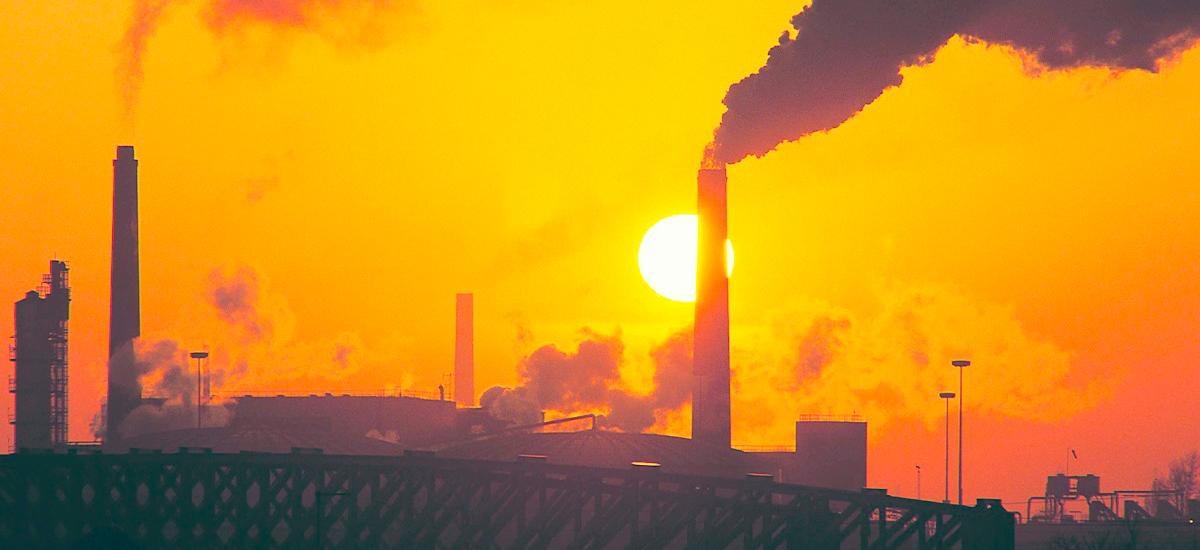Table of Contents
Air pollution from coal-fired power plants is linked with asthma, cancer, heart and lung ailments, neurological problems, acid rain, global warming, and other severe environmental and public health impacts.
Coal has long been a reliable source of US energy, but it comes with tremendous costs because it is incredibly dirty. The same chemistry that enables coal to produce energy—the breaking down of carbon molecules—also produces a number of profoundly harmful environmental impacts and pollutants that harm public health. Air pollution and global warming are two of the most serious.
Coal and air pollution
When coal burns, the chemical bonds holding its carbon atoms in place are broken, releasing energy. However, other chemical reactions also occur, many of which carry toxic airborne pollutants and heavy metals into the environment.
This air pollution includes:
Mercury: Coal plants are responsible for 42 percent of US mercury emissions, a toxic heavy metal that can damage the nervous, digestive, and immune systems, and is a serious threat to the child development. Just 1/70th of a teaspoon of mercury deposited on a 25-acre lake can make the fish unsafe to eat. According to the Environmental Protection Agency’s (EPA) National Emissions Inventory, US coal power plants emitted 45,676 pounds of mercury in 2014 (the latest year data is available).
Sulfur dioxide (SO2): Produced when the sulfur in coal reacts with oxygen, SO2 combines with other molecules in the atmosphere to form small, acidic particulates that can penetrate human lungs. It’s linked with asthma, bronchitis, smog, and acid rain, which damages crops and other ecosystems, and acidifies lakes and streams. US coal power plants emitted more than 3.1 million tons of SO2 in 2014.
Nitrogen oxides (NOx): Nitrous oxides are visible as smog and irritate lung tissue, exacerbate asthma, and make people more susceptible to chronic respiratory diseases like pneumonia and influenza. In 2014, US coal power plants emitted more than 1.5 million tons.
Particulate matter: Better known as “soot,” this is the ashy grey substance in coal smoke, and is linked with chronic bronchitis, aggravated asthma, cardiovascular effects like heart attacks, and premature death. US coal power plants emitted 197,286 tons of small airborne particles (measured as 10 micrometers or less in diameter) in 2014..
Other harmful pollutants emitted in 2014 by the US coal power fleet include:
- 41.2 tons of lead, 9,332 pounds of cadmium, and other toxic heavy metals.
- 576,185 tons of carbon monoxide, which causes headaches and places additional stress on people with heart disease.
- 22,124 tons of volatile organic compounds (VOC), which form ozone.
- 77,108 pounds of arsenic. For scale, arsenic causes cancer in one out of 100 people who drink water containing 50 parts per billion.
Most of these emissions can be reduced through pollution controls—sometimes by a significant amount—though many plants don’t have adequate controls installed.
Under the Clean Air Act, the Clean Water Act and other environmental laws, the US Environmental Protection Agency (EPA) has the responsibility and authority to set and enforce emissions limits for pollutants deemed harmful to human health and the environment.

Coal and global warming
Of coal’s many environmental impacts, none are as harmful, long term, and irreversible as global warming. Global warming is driven by emissions of heat-trapping gases, primarily from human activities, that rise into the atmosphere and act like a blanket, warming the earth’s surface.
Consequences include rising temperatures and accelerating sea level rise as well as growing risks of drought, heat waves, heavy rainfall intensified storms, and species loss. Left unchecked climate change could lead to profound human and ecological disruption.
Carbon dioxide (CO2) emissions from combusting fossil fuels are the main driver of global warming. CO2 is also the main byproduct of coal combustion: nearly 4 grams of CO2 are produced for every gram of carbon burnt (depending on its type, coal can contain as much as 60 to 80 percent carbon).
Methane (CH4) often occurs in the same areas that coal is formed, and is released during mining activities. Methane is 34 times stronger than carbon dioxide at trapping heat over a 100-year period and 86 times stronger over 20 years; roughly 10 percent of all US methane emissions come from coal mining.
Carbon capture and storage technologies (or CCS) are emerging technologies that could allow coal plants to capture some of the CO2 they would otherwise release; the CO2 could then be transported and stored in a geological repository without harming the earth’s climate. A few projects worldwide are currently operating, but the technology remains expensive, especially compared with cleaner forms of generation, and it is still unproven at the scale needed to materially contribute to addressing climate change. The deployment of CCS would also not reduce other harmful pollutants produced across the fuel cycle of coal.
To date the federal government has invested on the order of $5 billion dollars in CCS research, including $4.8 billion under the Obama administration and millions of dollars during the Bush administration.
The Union of Concerned Scientists supports continued federal incentives for research for a limited number of full-scale integrated CCS demonstration projects, alongside private sector efforts. CCS technology could potentially play an important role in transitioning to a clean energy future, if significant cost, technical, legal and environmental challenges can be overcome.
UCS has spent decades advocating for clean energy technologies. You can read more about cleaner, reliable alternatives to coal—like wind and solar—here.




